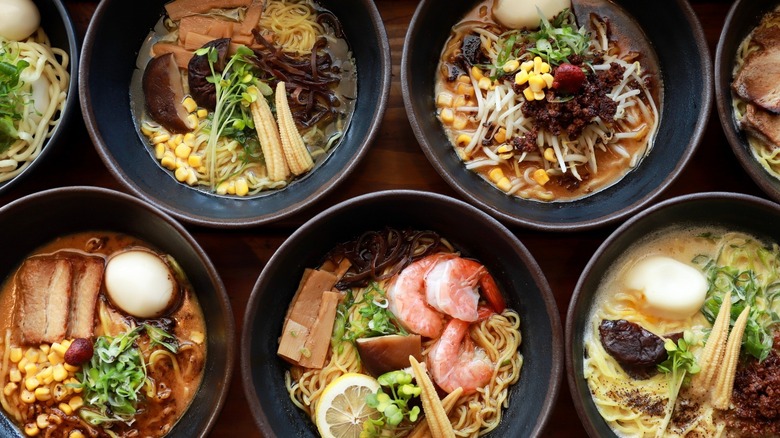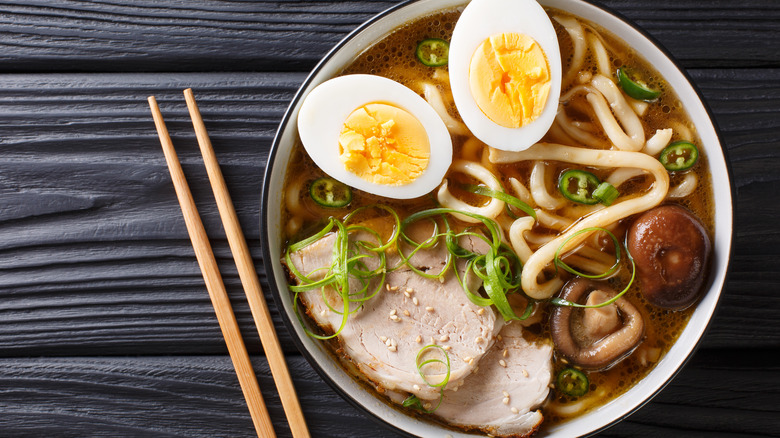What Noodles Should You Use For Homemade Ramen?
Picture this: You decided to stay at home for a cozy night of movies and homemade food. Your dish of choice should be something fulfilling, almost like a hug. Something that has carbs and is warm and rich in flavor. There is a one-word perfect answer, and that is ramen!
But, wait, you need to understand that instant ramen and homemade ramen are different. The from-scratch kind is definitely fresher and more elaborate. Although it is known as a popular Japanese dish, it originated when Chinese ramen was brought to Japan and evolved from there. The "men" in "ramen" means noodles — a key ingredient in a dish that also includes stock, sauce, a fatty element, and a variety of toppings like nori, soybean sprouts, pork, mushrooms, and more (via Google Arts and Culture).
It's easy to find ramen in restaurants, whether you're craving savory shoyu or rich tonkotsu. However, if feel like replicating it at home, you'll need to start with a good base. Chicken, veggie, or pork broth is a great start, and if you don't feel like preparing one from square one, you can always upgrade your store-bought broth. Next, think twice about whether the noodles in your pantry will work for ramen. Picking this element is crucial — noodles affect the flavor, the texture, and your whole ramen experience.
A thicker ramen noodle is best in an intensely flavored broth
Aaron Israel and Sawako Okochi, Japanese cookbook authors and chefs, told Real Simple that if your ramen broth is super rich and flavorful, you're better off choosing a thicker noodle. This way, each bite of noodles will carry just a touch of that intense broth, whereas "thinner and wavier" noodles would soak up more soup and be outshone by its flavor. By their reasoning, a highly concentrated pork ramen would pair best with a thicker noodle, like udon, whereas a lighter chicken- or veggie-based soup should go with thinner noodles similar to the ones you find in instant ramen.
However, it is all a matter of personal taste. Some people like to taste a lot of concentrated broth in every bite, while others would like to give their toppings a chance to play the lead. But beware, not all noodles are meant to be in ramen. As Foods Guy explains, proper ramen noodles contain wheat flour, salt, and alkaline water. The ratio of water used while kneading the dough will affect the noodles' stretchiness, texture, and thickness. Some of the most popular choices are udon and soba noodles. Udon noodles are made with wheat flour, and soba with buckwheat flour.
Once you figure out what type of noodles you like, you are ready to follow a tasty ramen recipe. Remember to avoid common ramen mistakes — like boiling your noodles for too long or not playing with a variety of toppings — and enjoy your ramen night, thick or thin!

